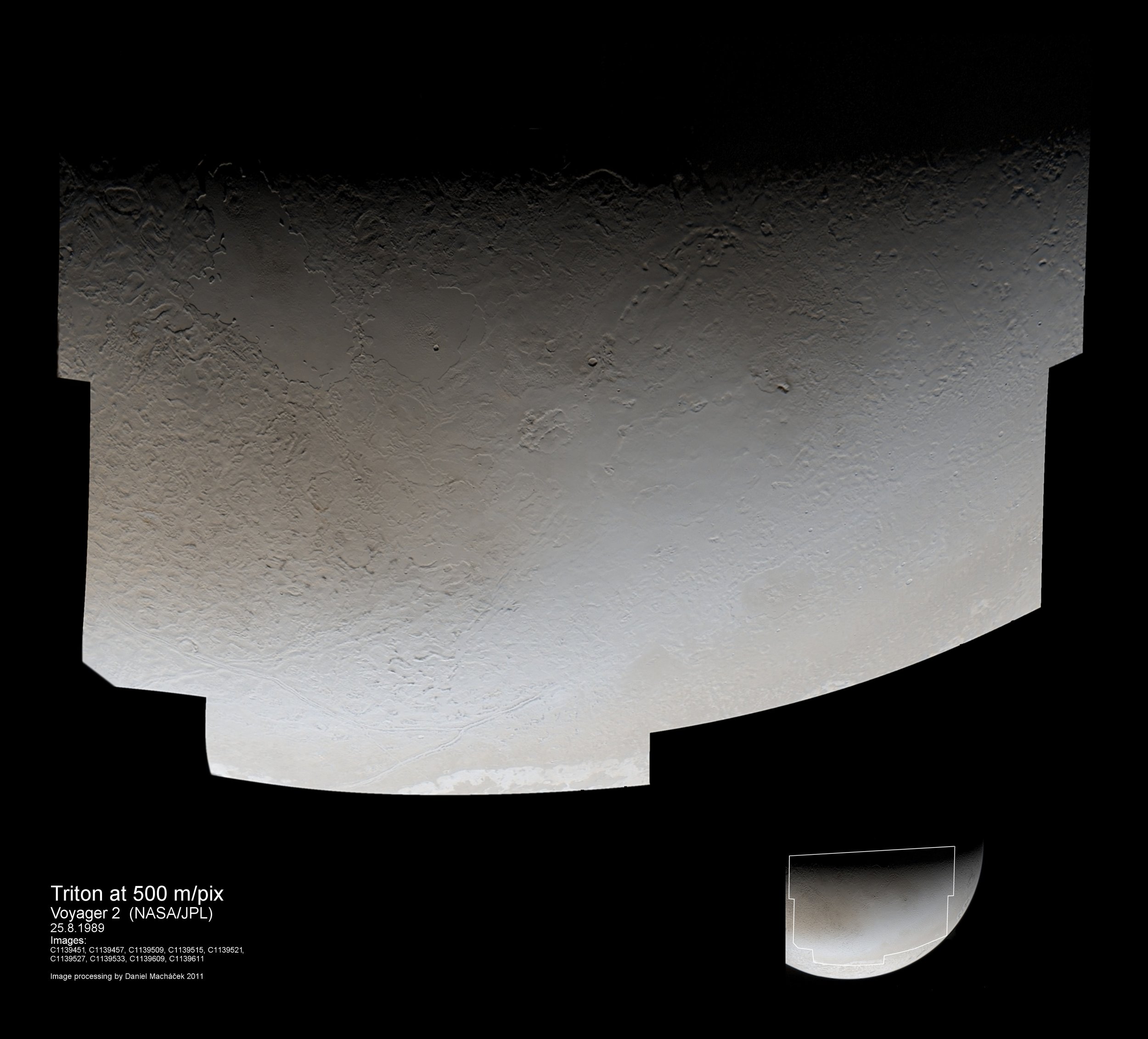Nice update to an old Voyager image with colors added based on actual colors captured in other images. See original post here by Jason Major.
Historic Robotic Spacecraft Poster Survey
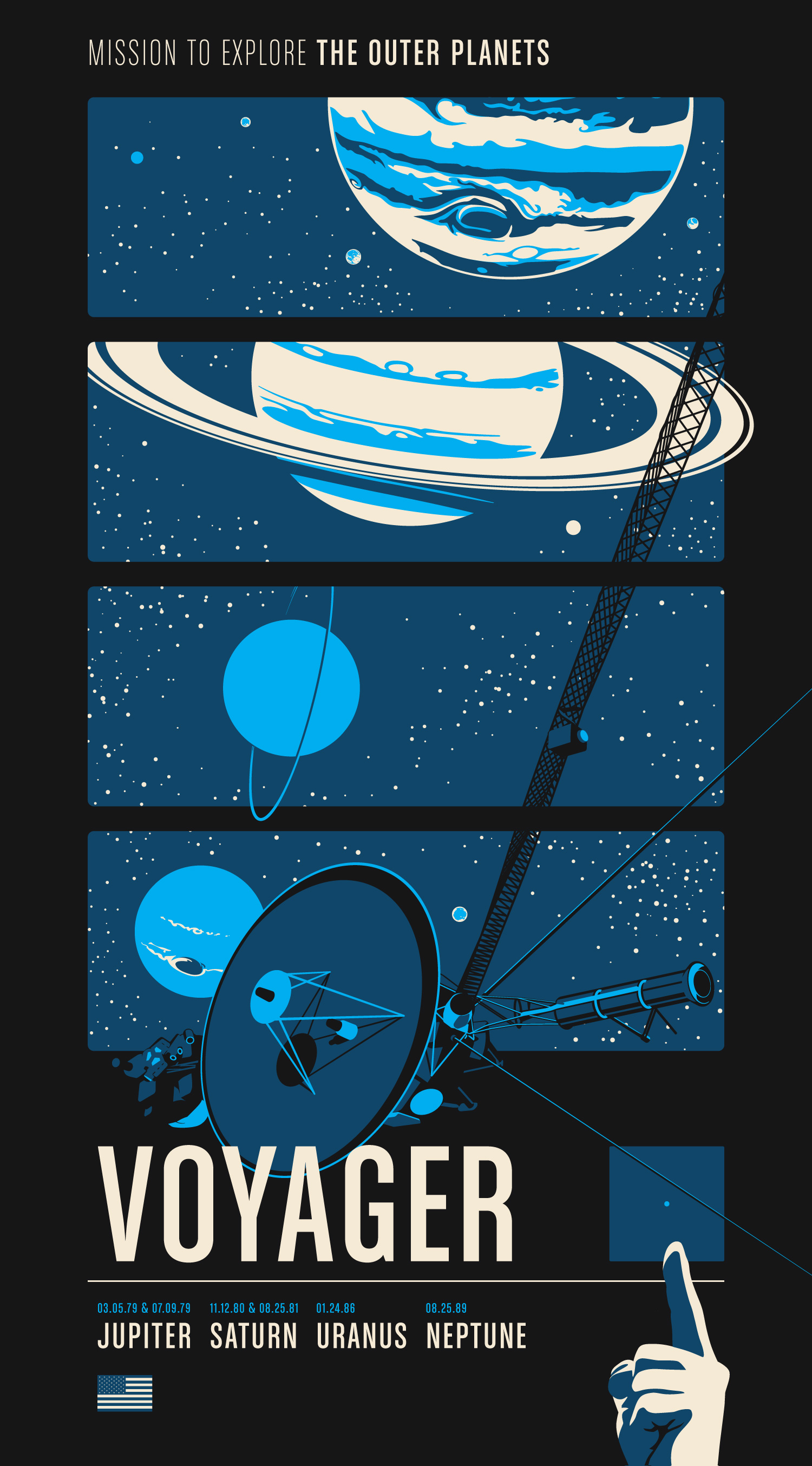 Our new Kickstarter project proposes the creation of three screen-printed posters celebrating the most popular and notable interplanetary robotic space missions in history. Going into this, we knew that poster #1 had to go to the hugely popular Voyager missions (shown above). However, we need your help selecting the themes of posters #2 and #3. So head over to The Planetary Society now to vote on your three favorite missions, but do it by the 19th to have it count for the poster selection. If this goes better than expected we could even wind up designing a fourth or fifth.
Our new Kickstarter project proposes the creation of three screen-printed posters celebrating the most popular and notable interplanetary robotic space missions in history. Going into this, we knew that poster #1 had to go to the hugely popular Voyager missions (shown above). However, we need your help selecting the themes of posters #2 and #3. So head over to The Planetary Society now to vote on your three favorite missions, but do it by the 19th to have it count for the poster selection. If this goes better than expected we could even wind up designing a fourth or fifth.
Crescent Triton
 And you thought the Voyager mission was over. A crescent Triton as seen by Voyager on August 25, 1989. Image by Gordan Ugarkovic.
And you thought the Voyager mission was over. A crescent Triton as seen by Voyager on August 25, 1989. Image by Gordan Ugarkovic.
Triton In Super High-Resolution
Amazing new looks at some pretty old data (Voyager at Neptune in 1989). Thanks to Machi at Unmanned Spaceflight.
Rolf Olsen Photo Renders Neptune
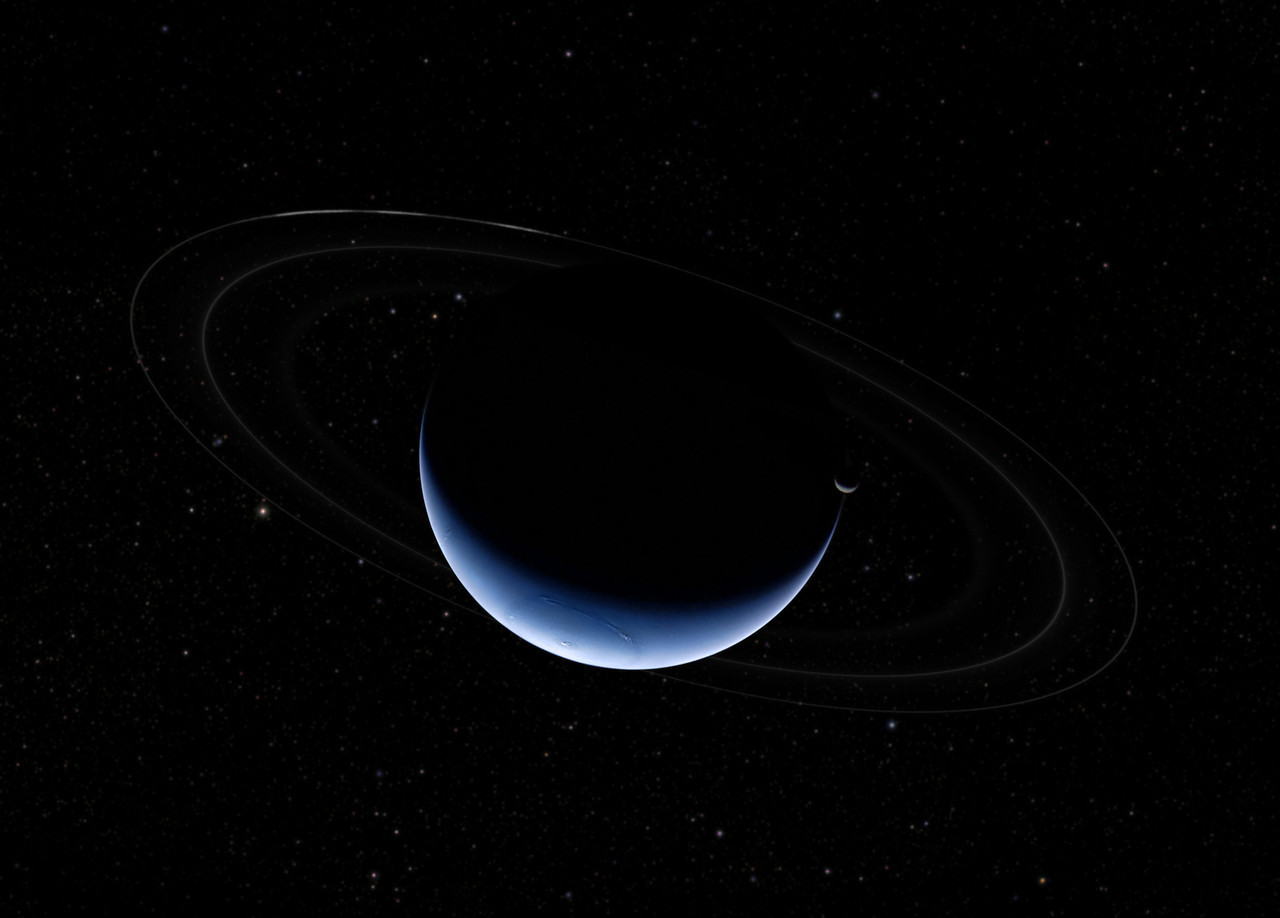 The above is an interesting project to image the full Neptune system based on actual data returned by Voyager. According to the article published along with the image — Rolf Wahl Olsen composed this scene from actual images from the departing Voyager probe. The rings (which were never photographed in their entirety) are based on over-exposed images and then density mapped to a model which was applied to the scene. Even the stars are based on one of the over exposed images of the rings which revealed what the probe would have seen and that field data was inserted from and image generated by Google Sky.
The above is an interesting project to image the full Neptune system based on actual data returned by Voyager. According to the article published along with the image — Rolf Wahl Olsen composed this scene from actual images from the departing Voyager probe. The rings (which were never photographed in their entirety) are based on over-exposed images and then density mapped to a model which was applied to the scene. Even the stars are based on one of the over exposed images of the rings which revealed what the probe would have seen and that field data was inserted from and image generated by Google Sky.
Moon May at Kurzgesagt
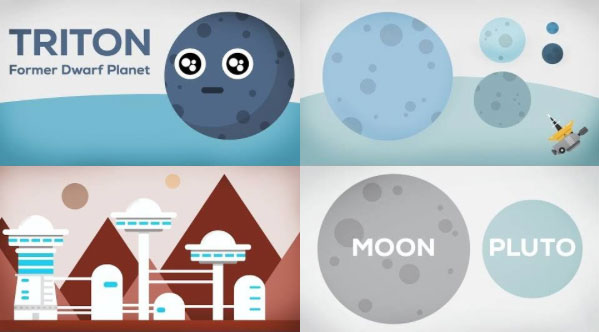 We mentioned these guys a week or so ago. But they just finished Moon May which is a series of animated videos that explore our moon, Mars’ moons, Neptune’s moon Triton and the Pluto system.
We mentioned these guys a week or so ago. But they just finished Moon May which is a series of animated videos that explore our moon, Mars’ moons, Neptune’s moon Triton and the Pluto system.
You Are the Center of the Solar System
 You Are The Sun is the latest space themed tee by Chop Shop Store. Following on iconic tees that collected various deep space missions and historic Earth orbit missions, this new design draws a new picture of The Solar System as we know it today, complete with Carl Sagan’s pale blue dot.
You Are The Sun is the latest space themed tee by Chop Shop Store. Following on iconic tees that collected various deep space missions and historic Earth orbit missions, this new design draws a new picture of The Solar System as we know it today, complete with Carl Sagan’s pale blue dot.

With your head as a stand-in for The Sun — the tee includes all 8 planets, 7 major moons, The Asteroid Belt and even details little Pluto lost among countless Kuiper Belt objects. We are now providing yet another link here to get it for Men on American Apparel 2001 or Tultex tees and for Women on American Apparel 2102 tees.
iPhone Skins Featured on feulyourcreativity.com
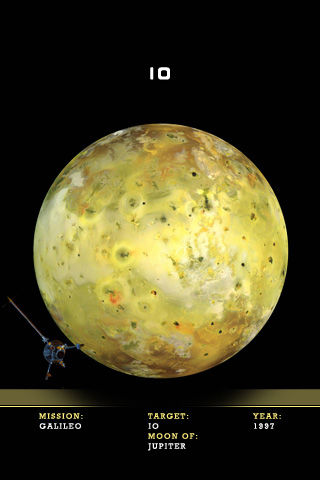 Not to re-post old material, but our iPhone planetary skins were recently posted to fuelyourcreativity.com for free download. So I thought I would just remind everyone and maybe direct a little traffic love their way.
Not to re-post old material, but our iPhone planetary skins were recently posted to fuelyourcreativity.com for free download. So I thought I would just remind everyone and maybe direct a little traffic love their way.
Ted Stryk’s Triton Redux
 Planetary Blog has a nice review of Voyager 2’s flyby of Neptune’s moon Triton. That was 1989 and sadly, there is no way we will be seeing any new Triton images for at least 20 years as no missions are currently approved. There is a concept mission being considered for a New Frontiers class probe which is where we even get the number 20 from, but if that mission is not approved… who knows.
Planetary Blog has a nice review of Voyager 2’s flyby of Neptune’s moon Triton. That was 1989 and sadly, there is no way we will be seeing any new Triton images for at least 20 years as no missions are currently approved. There is a concept mission being considered for a New Frontiers class probe which is where we even get the number 20 from, but if that mission is not approved… who knows.
Ted Stryk has been re-working the old Voyager mission images at Triton and the results are shockingly sharp and high resolution. Ted’s work is also used on this “portrait” image of Triton, but this image shown above is another view and is comparatively massive in size for the Voyager Uranus/Neptune encounters.
The iPhone Set 01: Bodies of Major Interest
 If I am going to keep making these things… I’d be a fool to not include a set for the Apple iPhone. Coincidentally, when you purchase your iPhone and do not yet have a phone service, the phone displays a full-disc image of the Earth pretty much displayed exactly as these do when uploaded to your iPhone. So in the spirit of continuity, you can now opt instead to have Mercury, Venus, Earth, The Moon (Luna), Mars, Jupiter, Io, Europa, Ganymede, Callisto, Saturn, Enceladus, Titan, Iapetus, Hyperion, Uranus, Miranda, Neptune or Triton grace your screen instead of the default Earth.
If I am going to keep making these things… I’d be a fool to not include a set for the Apple iPhone. Coincidentally, when you purchase your iPhone and do not yet have a phone service, the phone displays a full-disc image of the Earth pretty much displayed exactly as these do when uploaded to your iPhone. So in the spirit of continuity, you can now opt instead to have Mercury, Venus, Earth, The Moon (Luna), Mars, Jupiter, Io, Europa, Ganymede, Callisto, Saturn, Enceladus, Titan, Iapetus, Hyperion, Uranus, Miranda, Neptune or Triton grace your screen instead of the default Earth.
The easiest way to install wallpapers to your iPhone is to make a special set in iPhoto and simply drag all the files to that folder. Then in iTunes have your iPhone sync that folder to your photos collection. After that it is as simple as opening the “Photos” area of your iPhone. Go to your new folder of images and open whichever image you want. Then tap on the image just once and assign it as a wallpaper using the “Use as Wallpaper” button in the lower left corner of the screen.
If you have a PC I have no idea in hell how the hell you get images into your iPhone. I would buy a Mac… you have an iPhone and use iTunes… you are half-way there.
For a version of these with no graphics see this link.
Wallpaper: Triton Cryo-Volcanos
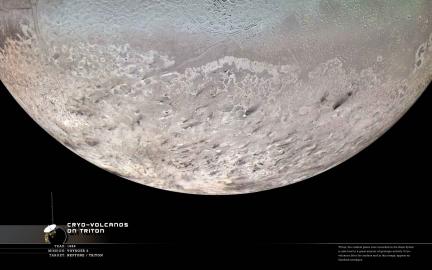 As of this time, Triton (a moon of Neptune) has the coldest temperature ever recorded in human history on any terrestrial surface… -235 C, -391 F. At these temperatures, nobody would have expected anything other than a huge frozen solid ice ball. Instead, Triton is littered with what we now call cryo-volcanos… or cold volcanos. They erupt or eject materials other than molten rock, such as water, ammonia or methane. As we are seeing in places like Titan (who is also suspected of having cryo-volcanos) many characteristics of Earth geology and weather are simulated elsewhere in the Solar System with different materials. On Earth it rains water, but on Titan it rains methane, and likewise on Triton it erupts probably liquid nitrogen instead of magma as it does here on Earth.
As of this time, Triton (a moon of Neptune) has the coldest temperature ever recorded in human history on any terrestrial surface… -235 C, -391 F. At these temperatures, nobody would have expected anything other than a huge frozen solid ice ball. Instead, Triton is littered with what we now call cryo-volcanos… or cold volcanos. They erupt or eject materials other than molten rock, such as water, ammonia or methane. As we are seeing in places like Titan (who is also suspected of having cryo-volcanos) many characteristics of Earth geology and weather are simulated elsewhere in the Solar System with different materials. On Earth it rains water, but on Titan it rains methane, and likewise on Triton it erupts probably liquid nitrogen instead of magma as it does here on Earth.
Only two active cryo-volcanos have been confirmed on Triton, but it is generally assumed that each one of those black smudges visible in this image are the remnants of recently active cryo-volcanos. There are quite a few…
Wallpaper: Triton Portrait
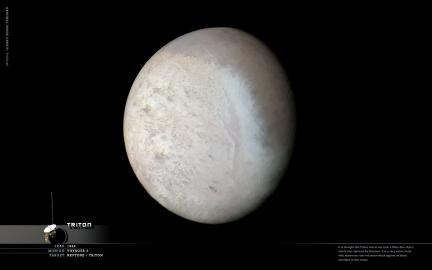 Another big surprise of the Voyager mission was the discovery that the coldest place in the solar system is also home to a considerable amount of geological activity. The moon appears to be widely populated by a large amount of cryovolcanos which were observed directly by Voyager in 1989. These volcanos can be seen in this image as small black smudges mostly located running across the center of the disk. It also has a tenuous atmosphere almost entirely composed of nitrogen.
Another big surprise of the Voyager mission was the discovery that the coldest place in the solar system is also home to a considerable amount of geological activity. The moon appears to be widely populated by a large amount of cryovolcanos which were observed directly by Voyager in 1989. These volcanos can be seen in this image as small black smudges mostly located running across the center of the disk. It also has a tenuous atmosphere almost entirely composed of nitrogen.
One of the most interesting bits of information about Triton to me is that the orbit runs in the opposite direction of Neptune’s rotation. This suggests that at one time, Triton may have been a dwarf planet captured by Neptune’s pull. This would also explain the lack of numerous moons which we see at many of the other gas giant planets. Triton would have swept through the Neptune system and probably either collided with or ejected whatever moons may have existed in the system. Triton also has a very slowly decaying orbit and will likely collide with Neptune or shatter into pieces to form a new ring system in 3.6 billion years.
Image Note: This is the orignal Triton portrait image that was posted to this site. The newer and improved main top image was recently generated by Ted Stryk and posted to unmannedspaceflight.com.


